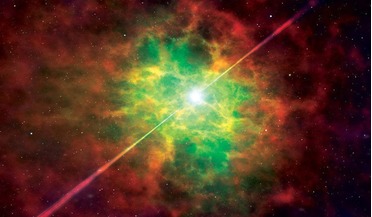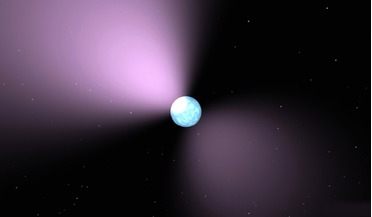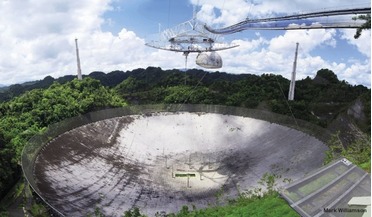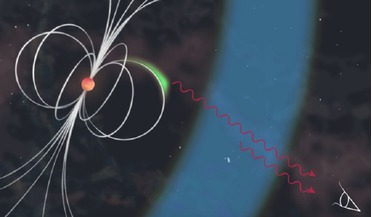 03 May 2017
Milky Way dark matter still as elusive as ever
03 May 2017
Milky Way dark matter still as elusive as ever
...at the centre of the Milky Way is most likely caused by pulsars and not dark matter as previously suggested. The mysterious glow at ... the signal has been assigned to a population of pulsars – incredibly dense, rapidly spinning cores of collapsed stars...
...arachnid, this particular version is named after a class of binary pulsar that are menacing for another reason; they have a tendency ...to devour their companion star. Like the Black Widow pulsar variety, all of the objects that contribute to the ...
 20 November 2020
The iconic Arecibo Observatory to be demolished due to safety concerns
20 November 2020
The iconic Arecibo Observatory to be demolished due to safety concerns
... astronomical disciplines to boost discoveries, including research into brown dwarfs, locating near-Earth objects (NEOs) understanding pulsars and helping to refine fundamental theories of gravity . Most notable was its discovery of the first binary...
 September 2017
Telescope targets enigmatic deep space mystery
September 2017
Telescope targets enigmatic deep space mystery
... South Wales, Australia. The pulse, dubbed the ‘Lorimer burst’, exhibited a ‘dispersion’ sweep characteristic of all pulsars. Pulsars are ultra dense, rotating neutron star remnants of a supernova explosion in our Galaxy, which emit jets of radiation...
 July 2021
Arecibo - an astounding legacy
July 2021
Arecibo - an astounding legacy
...of NANOGrav, the North American Nanohertz Observatory for Gravitational Waves, which uses an array of high-precision millisecond pulsars to look for variations in the pulse arrival times as a function of angle and measure the strain produced as space...
 13 January 2016
High-energy theory models questioned as neutron star produces most energetic pulsed emission radiation ever detected
13 January 2016
High-energy theory models questioned as neutron star produces most energetic pulsed emission radiation ever detected
... theory models believed to be at work in neutron stars,” continued Roberta Zanin from ICCUB-IEEC, Barcelona. The Crab pulsar, is a left-over remnant star thought to have formed by the gravitational collapse of a once massive star after a supernova...